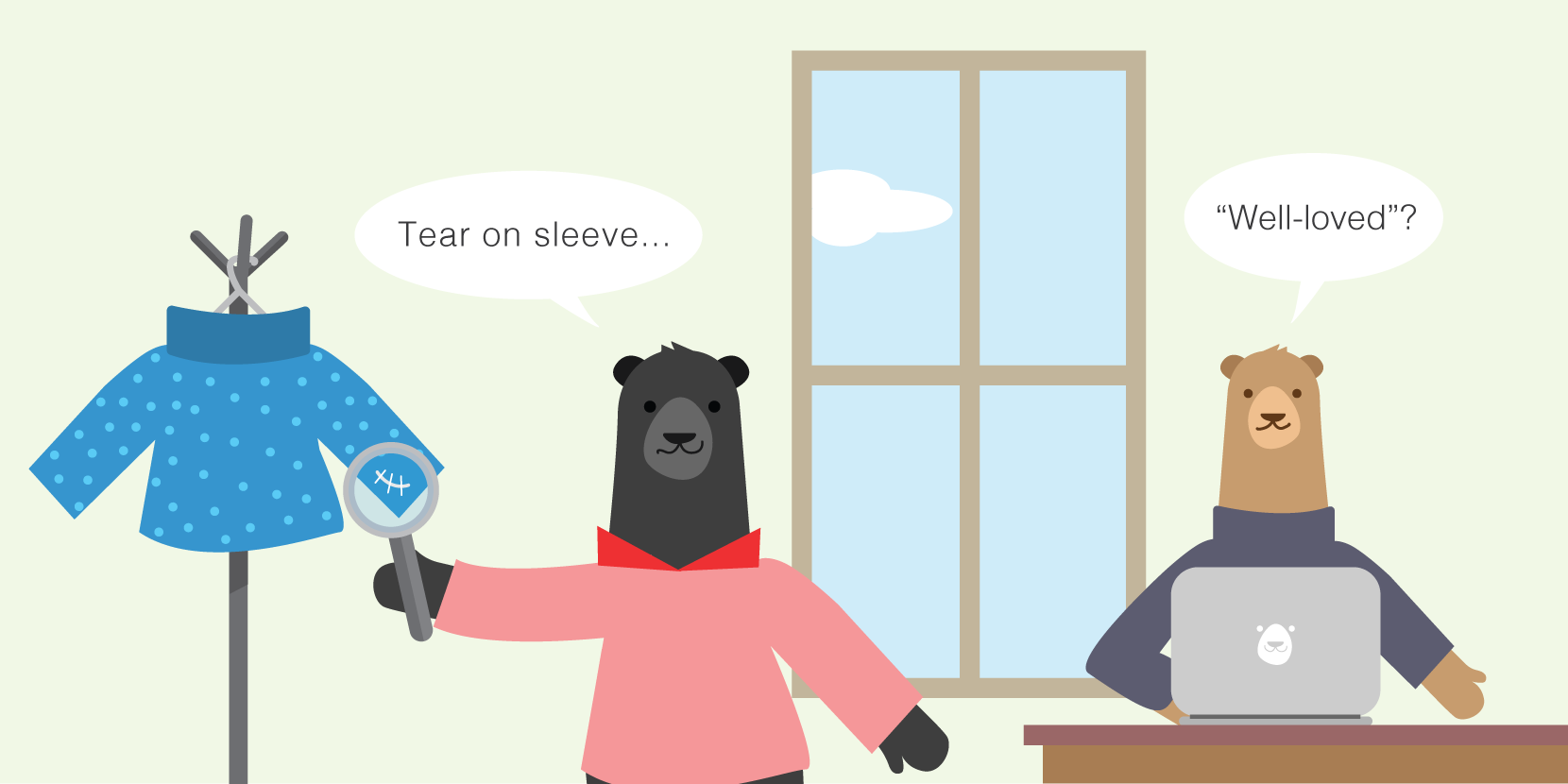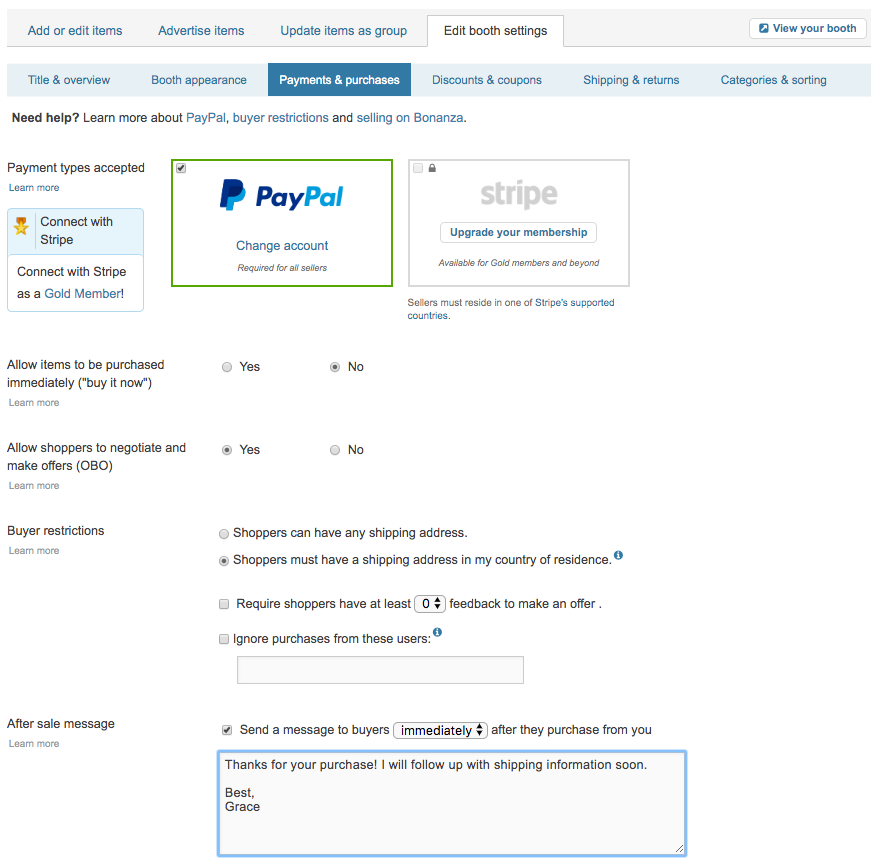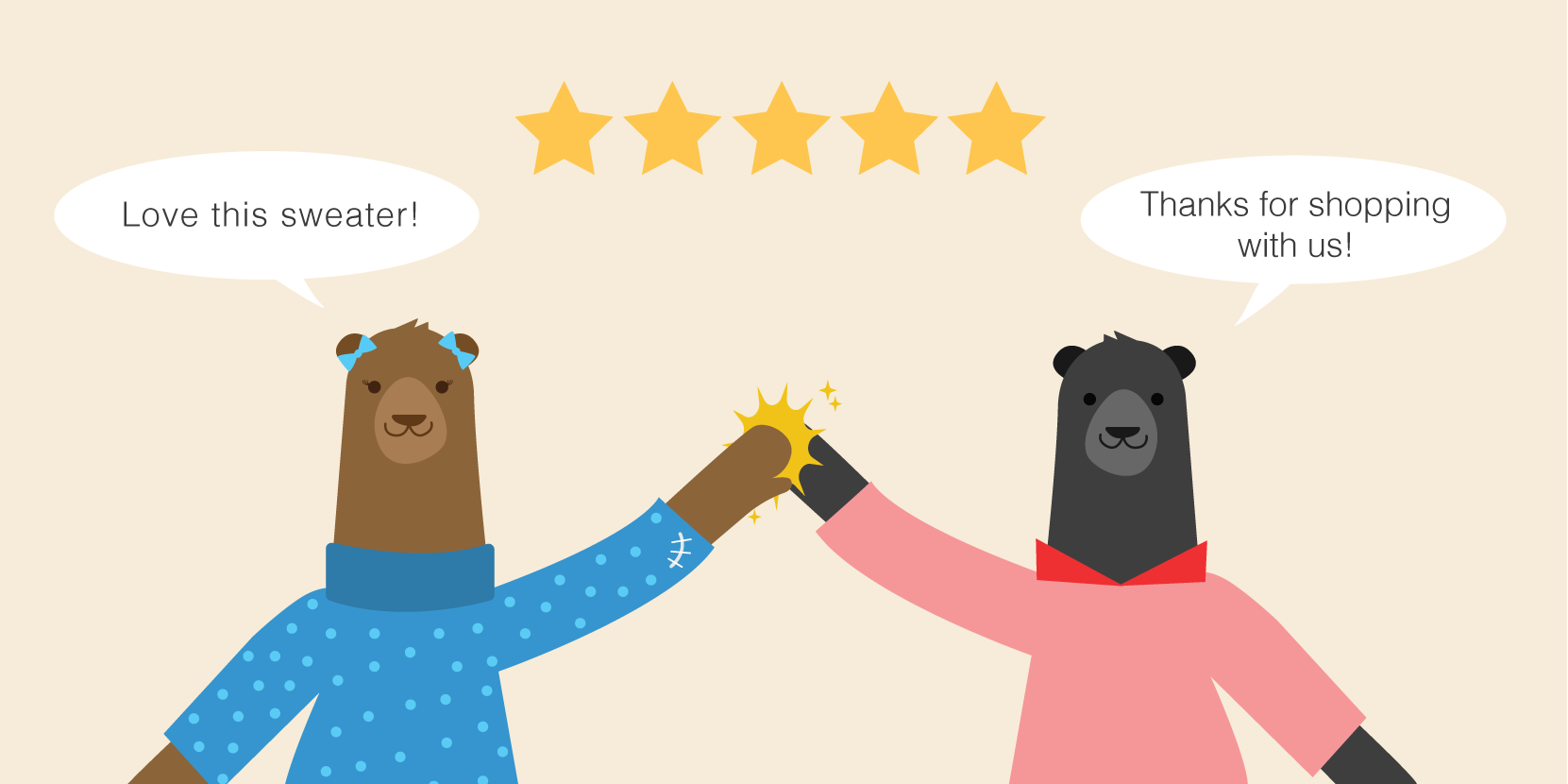|
As an independent business in the big ocean of ecommerce retailers, providing excellent customer service is not an option – it’s a necessity.
We promise we’re not saying that just because we think it’s nice to be nice (although we do). According to a survey of customer service stats by Help Scout, three in five Americans (59%) will try a new brand or company if they think they’ll have a better service experience. With countless retail choices only a click away, online shoppers can (and will) do this easily.
There’s also the matter of repeat business to consider. As we mentioned in the Holiday Workshop 'Small Business Advertising', you are seven times more likely on average to sell to an existing customer than to acquire a new one. Providing superior customer service is one of the best ways to ensure that you stand out in customer’s memories the next time they are shopping.
So what exactly makes for a stellar customer experience?
Elements of a Stellar Customer Experience
There are three main components your business should focus on: transparency, communication, and feedback.
Transparency

Transparency refers to being upfront and honest with customers whenever possible. It increases the likelihood of positive feedback, which will benefit you with new customers. It also builds trust, improving the chances a shopper will return to your business.
There are lots of ways to show transparency. Let’s start with the listing process:
- Describe your items precisely as they are. If there is a small tear in the left sleeve of a shirt you’re selling, note that in the item description. Shoppers would much rather know about previous use, damage, or other intricacies of an item beforehand, rather than after a purchase. Even if the customer decides to keep an item that doesn’t match their expectations, they might not remember the transaction in a favorable light, hurting your chances of positive feedback and repeat business.
- Make sure your item titles and images are not misleading. These are the first elements that shoppers see in search results, so accuracy here helps increase the chance of conversion once the shopper actually reaches your listing page. This also helps with those shoppers that you might call ‘light readers’ – if a shopper misses the fine print, but your item titles and pictures are accurate, their expectations will hopefully still be in line with your product.
- Keep your ‘in-stock’ count on item listings updated to reflect your actual inventory. If you need to refund an order right after it is placed, the customer is more likely to take their business elsewhere, rather than take another chance with your business.
- Consider ways you can use transparency to present your items in a positive light. For instance, let’s say your handling time is longer than average due to the nature of your items. You could say something like, “Exquisite furniture like this takes time to package and ship safely. Please allow at least 2 weeks for shipping. Need it faster? Message us and we’ll see if we can make it happen!”
Transparency also extends into other areas, like the shipping process and your return policy. For example, if your shipping carrier notifies you of a weather delay, being transparent with the customer about the reason for the delay can help realign negative perceptions of your business.
Here’s another example: a customer didn’t read your ‘No Returns’ policy, and realized (too late) their item wasn’t what they wanted. You might soften the blow with a reasonable explanation of why your business cannot accept returns, and add a suggestion for an alternative product that would better suit the customer’s needs. Sometimes us humans just want to know the reason why something is the way it is before we can accept it, and shoppers are no exception.
Communication

Similar to transparency, communication is a crucial pillar in the foundation of your customer service experience. It starts from the first moment a shopper finds your listing, and continues even after the shopper has received their order.
Prior to purchase:
- Make yourself available to shoppers. The manner in which you handle questions will speak volumes to a customer who has never shopped with you before. It’s your first chance to prove that you are trustworthy, helpful, and eager to earn their business. It also helps remove other potential barriers to the purchase, such as “Will this fit me?” or “Will this part work with my car?” If you’re new to Bonanza, here’s a quick refresher on how email works on Bonanza (we call it 'Bmail').
- Strive to make your response times as quick as possible. This helps prevent shoppers from abandoning their purchase and looking elsewhere, and it gives shoppers an idea of how future business with you will proceed. In this day and age, people don’t expect to wait long, and being cognizant of this will help your business thrive.
- Pro tip: With a Bonanza membership, you can receive notifications about Bmails via SMS text message, and answer customer questions without skipping a beat.
- Mention alternative methods of communication when possible. Customers appreciate options. Be sure to put your social media accounts, email address, and business phone number in your booth details and/or ‘About Me’ section. (Note that it is not permissible to include these types of contact info directly within your item listings or booth banners).
After the purchase:
- Customize your ‘After Sale’ message. Bonanza sends an automated email confirmation to shoppers after a purchase, but you can also set up a personalized email. This is a great way to establish shipping expectations, reinforce trust and humanize your business. It can be sent immediately after purchase, or can be delayed for one day or one week. You can set this up in your Booth Settings, under the “Payments & Purchases” tab:

- Provide tracking information and an arrival estimate when possible. Shoppers can get frustrated waiting for items if they don’t know when they will arrive. They may develop unrealistic expectations or negative perceptions of your business during this time. A clear order status update is often all they need to return to their happy place.
- Consider authorizing your business phone number through our phone verification system. Sometimes shoppers contact Bonanza directly with questions about their order. Our support team will always show the shopper how to contact you via Bmail, but if your phone number has been verified in our system, we’ll also share that number with the shopper at that time. Shoppers appreciate the ease and directness of being able to call you, and this can give your feedback score a boost. You can do this by visiting your Account Settings and clicking on “Seller Settings.”
- Follow up after they’ve received their order. This makes the customer feel like you care, and it gives you a headstart on addressing any potential issues before the customer leaves negative feedback. This is also a great time to ask the customer to consider leaving positive feedback if they’re satisfied with the experience. Bonanza always sends an automated feedback request on your behalf, but sending a personalized request increases the chances of them following through.
Feedback

The golden egg, the prize, the reward for all your hard work: Positive feedback. It’s essential to attracting new shoppers (who you plan to turn into repeat customers, you hard worker, you).
On the flipside, too many complaints start to look like a ‘pattern’ in the eyes of prospective shoppers.
Sometimes shoppers leave negative feedback before even giving you the chance to correct the issue. Frustrating, we know. But fear not – when you receive negative feedback, there’s still time to turn the ship around. There’s also ways to maximize your return on positive feedback.
- Respond to each and every feedback on your feedback page. Your feedback page is visible to the public. Thanking a shopper for positive feedback is always appreciated, and it looks professional to other prospective shoppers. Similarly, by responding to negative feedback in a helpful manner, prospective shoppers will see that you care and do your best to make things right when needed.
- Remember that Bonanza gives shoppers the chance to update negative feedback. It’s worth your time to try and resolve issues to the best of your ability.
- Practice empathy and patience. Attempting to understand the situation from the customer’s perspective can go a long way. It will help your responses appear compassionate, caring, and professional. If a shopper is in the wrong, put yourself in their shoes and visualize how you would like to be corrected. Politely pointing to your existing policies and published info can be a good way to do this. For example: “Sorry to hear that you did not receive your order in time for Christmas. We understand how that would be disappointing. As mentioned in our item listings and shipping policy, our items require 7-10 days for shipping and handling. We’ve just sent you a Bmail to see if there’s any other way we can help in this situation. We appreciate your business!”
- Consider using the Customer Marketing Tool to send a coupon or discount to shoppers who leave feedback. This is a great way to build repeat business with happy customers. Similarly, inviting a dissatisfied customer to shop again with a discount might be enough to convince the shopper to update their negative feedback – even if they do not return.
- Bonanza understands that some circumstances are out of the seller’s control. Our team will review cases and consider removing negative feedback under a few circumstances. Don’t forget, though – if you successfully resolve a negative situation with a customer directly, you can ask them to update their feedback, and that might be more beneficial for your business than getting it removed. Why? It demonstrates publicly that you are trustworthy, care about your customers, and do your best to make things right when needed.
- Take the time to analyze your communication records and feedback periodically. This is a great way to identify patterns and areas of your business that you can improve, or continue doing. For instance, do you get repeat questions about a certain item, or your return policy? Consider how you can convey that information more effectively and remove barriers to purchases in the future.
Looking for more feedback tips? Check out our article 10 Effective Ways to get Stellar Customer Feedback.
A Memorable Experience From Beginning to End
As Help Scout notes in their survey, 70% of buying experiences are based on how the customer feels they are being treated by your business. Focusing on your transparency, communication, and feedback will help make this holiday season your best yet. As always, if our team can help your business with any questions or tips, drop us a line at [email protected]. We appreciate you!
See more Holiday Workshop topics
|